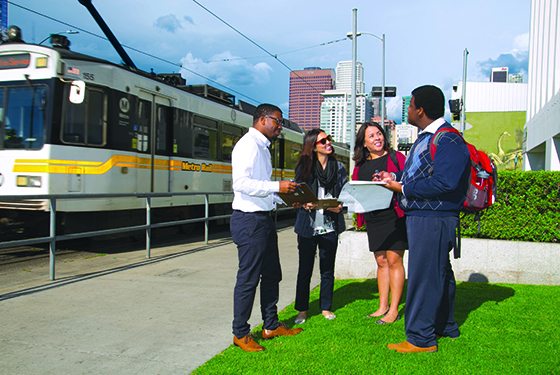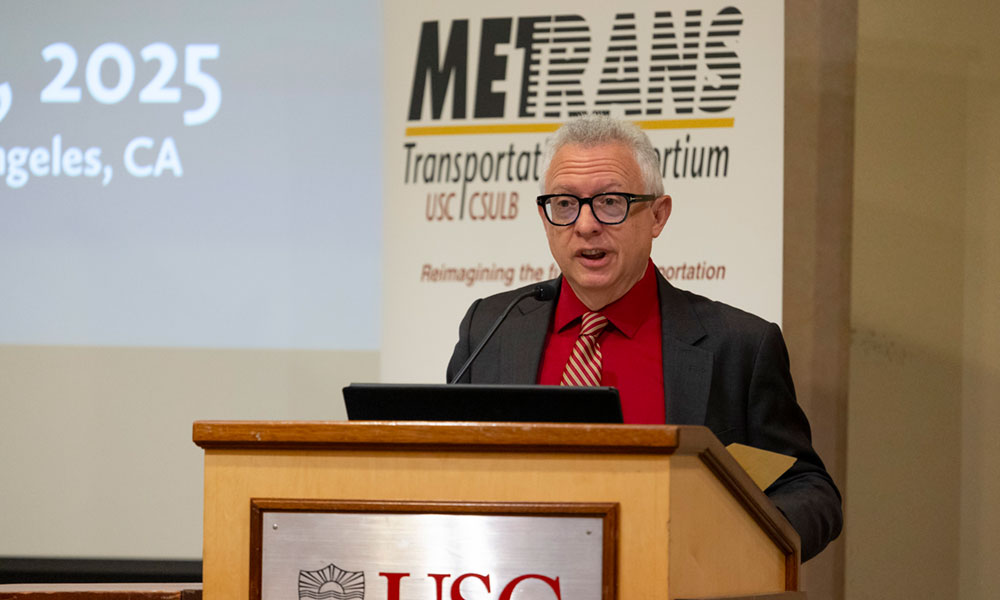To appreciate the complexity – and vulnerability – of the global food distribution network, consider the blueberry.
Much of the blueberries we eat are grown in Peru. In days past, they had to be shipped to Philadelphia because it was the only port in the U.S. that could legally transfer the berries from refrigerated ships to refrigerated trucks.
Blueberries, it turns out, have to be kept at 32 degrees for 15 days to ensure that foreign bugs are killed and don’t wind up in your cereal bowl. So, the port – and the trucks that delivered blueberries across the country – had to provide the right kind of cold treatment.
The former cold chain process added transportation costs and delayed delivery time by adding 2.2 million truck miles traveled across the United States, said Kristin Decas, Chief Executive Officer and Port Director, Port of Hueneme, who spoke at the keynote panel recently during the opening day of the International Urban Freight Conference.
The 10th bi-annual conference was sponsored by the METRANS Transportation Consortium, a partnership among the USC’s Price School of Public Policy and Viterbi School of Engineering and California State University, Long Beach. The conference drew more than 200 attendees from 15 countries and five continents, and included topics as diverse as zero-emission trucking, artificial intelligence to improve routing and delivery, warehouse siting, and a UPS site tour.
“METRANS is committed to building bridges between research and practice,” said Marlon Boarnet, Director of METRANS and a professor at the USC Price School. “Over a quarter of the research presentations at this year’s conference were from practice experts outside of the academy.”
Because of the unique requirements for shipping produce, Philadelphia served as the only port of entry that could accommodate the blueberry trade at scale. Philadelphia’s choke hold on blueberries was broken when the federal government began allowing other ports around the country, including the Port of Hueneme about 55 miles northwest of Los Angeles, to offer the same cold-treatment protocols.
“The farmer likes this because they can have year-round production of blueberries for the American consumer,” Decas said, “and it’s great for our climate because you’re not trucking all these blueberries from Philadelphia to California.”
CO2 emissions, she noted, fell by an impressive 3,660 tons.
But while the U.S. has the resources to build more robust food supply chains, the same cannot be said for many developing countries.

Master of Urban Planning
Make Cities More Just, Livable & Sustainable
USC’s MUP degree trains students to improve the quality of life for urban residents and their communities worldwide.
Find Out MoreCharles Kunaka, Lead Specialist on Connectivity, Macroeconomics, Trade & Investment at the World Bank Group, who joined Decas for the keynote panel titled “Global Supply Chain Systems for Food Trade,” noted that 1 billion people worldwide suffer from severe food insecurity, meaning their access to safe, nutritious food is severely limited or uncertain.
Kunaka said food insecurity is being driven by a number of factors, including increasing extreme weather caused by climate change that destroys crops, war, and a lack of modern infrastructure to move food.
“You need efficient transportation logistic systems and supply chains in order to distribute food across the world much more efficiently,” Kunaka said.
He noted, for example, that food shipped to Africa, which imports 25% of its food, travels an average of nearly 2,500 miles before it reaches its destination. And, compared to industrialized countries, the imported food is far more likely to sit in port before it is shipped to its final destination because of burdensome bureaucracy and inadequate infrastructure, Kunaka said. By contrast, food shipped to Europe travels an average of a little over 600 miles to its destination.
“In the U.S. it’s a little bit longer than that,” Kunaka said, “but, still, in Europe and the U.S., you can pretty much access all the food you need within two days.”
Both panelists said the many logistical and political challenges that stand in the way of better food distribution may be worsened by the Trump Administration’s ever-changing tariff policy.
Which brings us back to blueberries. And bananas.
Decas said the U.S. doesn’t have the capacity to grow enough blueberries or bananas to meet consumer demand. So, tariff duties will not incentivize more domestic production of either fruit, she predicted, but they could drive up their prices at the grocery store.
“A 10% increase in a tariff,” she said, referring to the Administration’s global tariff on the day of her talk, “is inevitably going to increase the cost of bananas to the American consumers. We can’t grow enough bananas in Hawaii to serve Americans . We can’t grow enough blueberries in America to have the blueberry year-round.”






